Steampunk Airborne Artillery? The WWI Recoilless Davis Gun
May 17th, 2022
7 minute read
Ask most “gun guys” if they have ever heard of the Davis Gun, and you are likely to be met with a blank stare. Granted, it is an obscure design that has become a minor footnote in firearms history. But that doesn’t mean it should be. The innovative Davis Recoilless Gun, which looks like something out of a steampunk sci-fi story, is yet another tale of American exceptionalism and firearms design that was far ahead of its time.
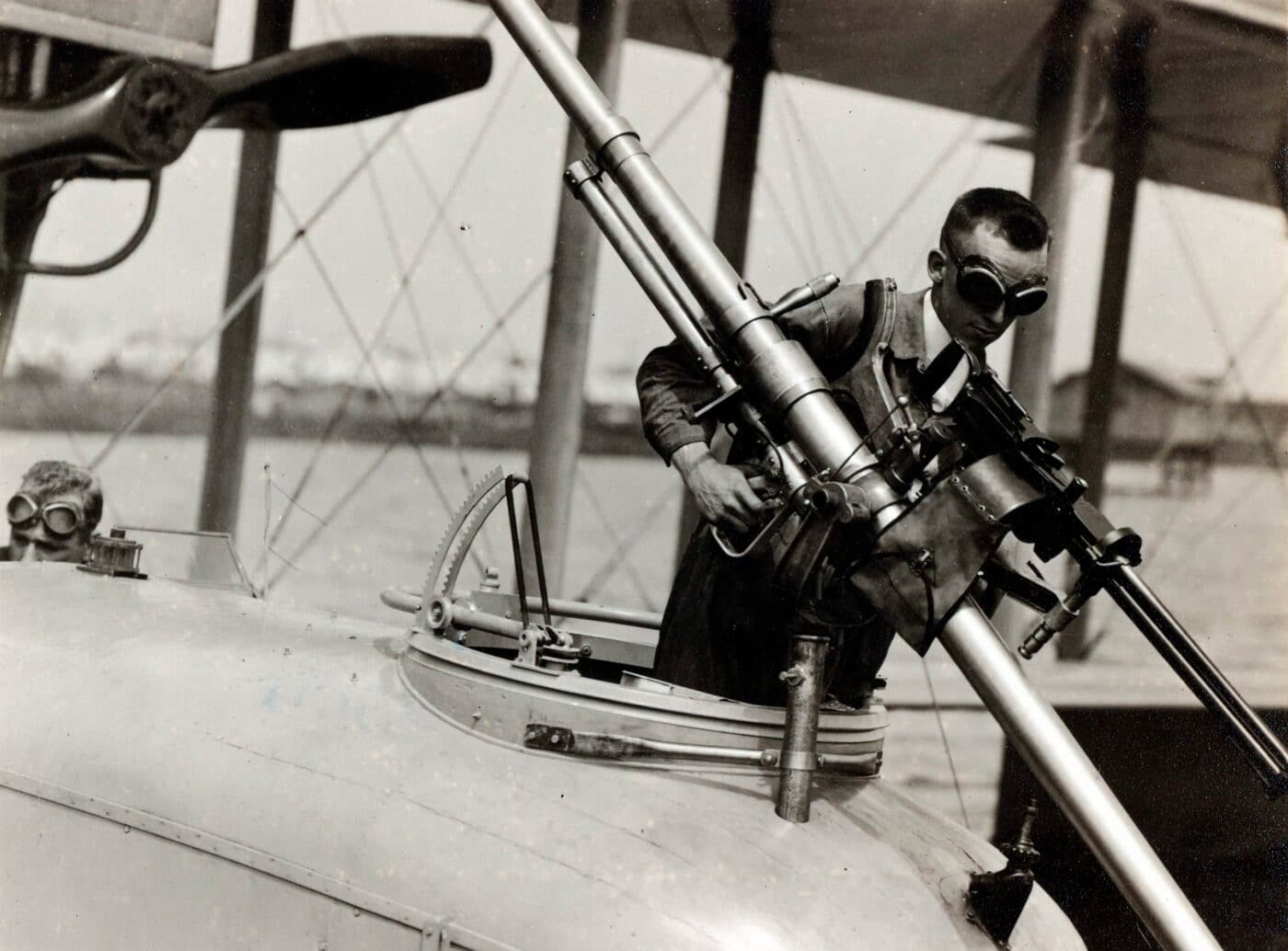
During 1912, U.S. Navy Commander Cleland Davis was the first inventor to create a truly recoilless gun, and he received a patent for his gun and its specialized ammunition in August 1914 — the same month that World War I began.
A Radical Design
The Davis design used a single chamber along with two equal barrels pointing in opposite directions. The forward barrel fired the explosive projectile while the rear barrel ejected an equal counterweight which was an inert combination of grease and lead shot (25 lbs. worth of 12 gauge shot and .6 lbs. of Vaseline). Since both loads were fired by the same explosive propellant charge, their equal weight and muzzle velocity meant that there was no recoil and the barrel remained in place.
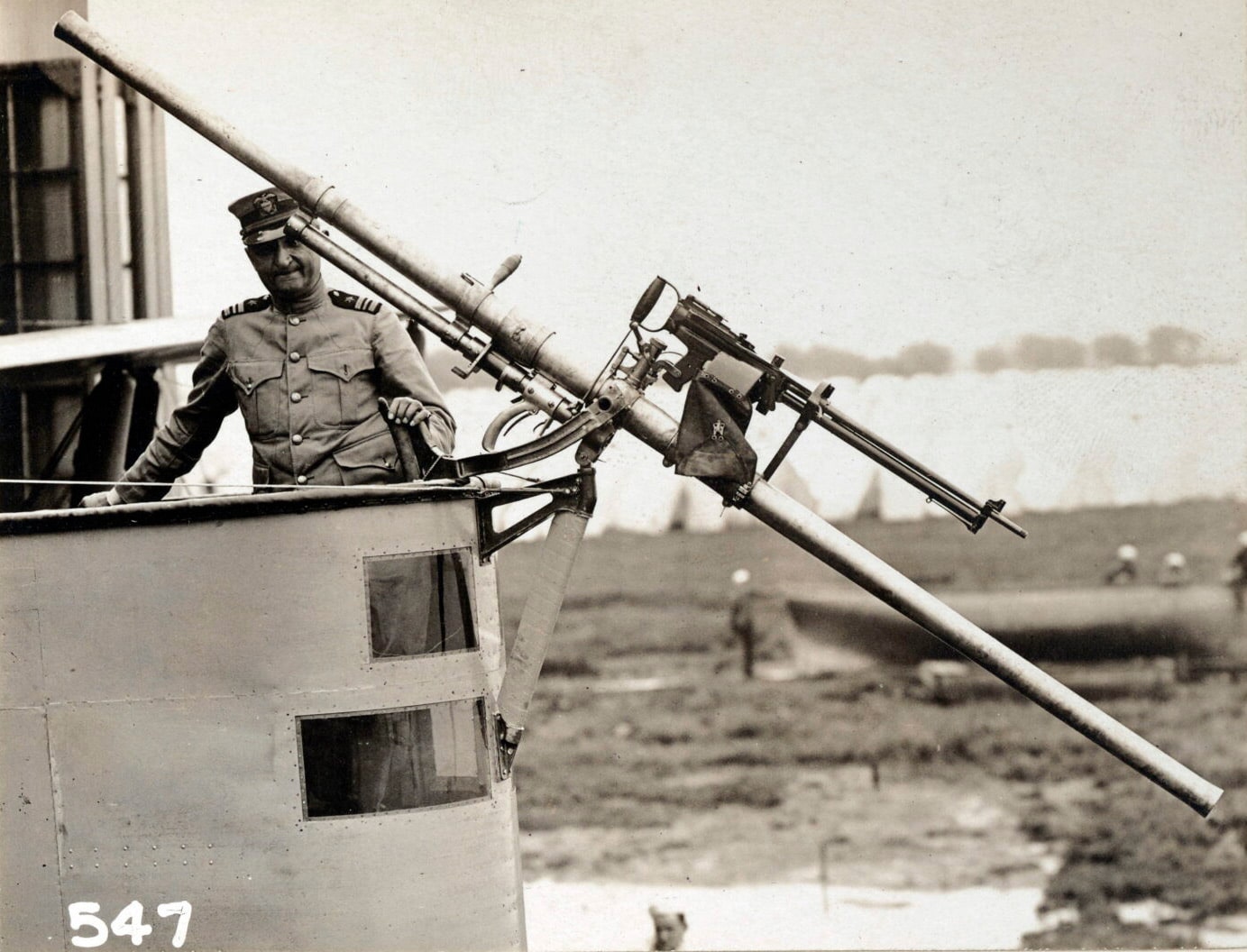
Interestingly, the Davis Gun was patented as the “C. Davis Aeroplane Gun”. Not only was Davis’ invention recoilless, it was also among the earliest forms of airborne artillery. Davis had applied for the patent on his gun on August 22, 1911, and clearly, he was ahead of his time. The first test-firing of a machine gun from an aircraft took place on June 7, 1912, as Captain Charles Chandler fired a prototype Lewis Gun from a U.S. Army Aeronautical Division Wright Model B Flyer with Lt. Roy Kirtland piloting the aircraft.
Reasonable Precautions
Soon after World War I began, more and more aircraft were fitted with weapons, ranging from machine guns to light bombs. By 1915, the aerial arms race was increasing by the month, and the Royal Naval Air Service adopted the Davis gun, ordering examples of the 2-pounder (40mm) and 6-pounder (57mm), and eventually the 12-pounder (75mm) from the General Ordnance Company based in Connecticut.
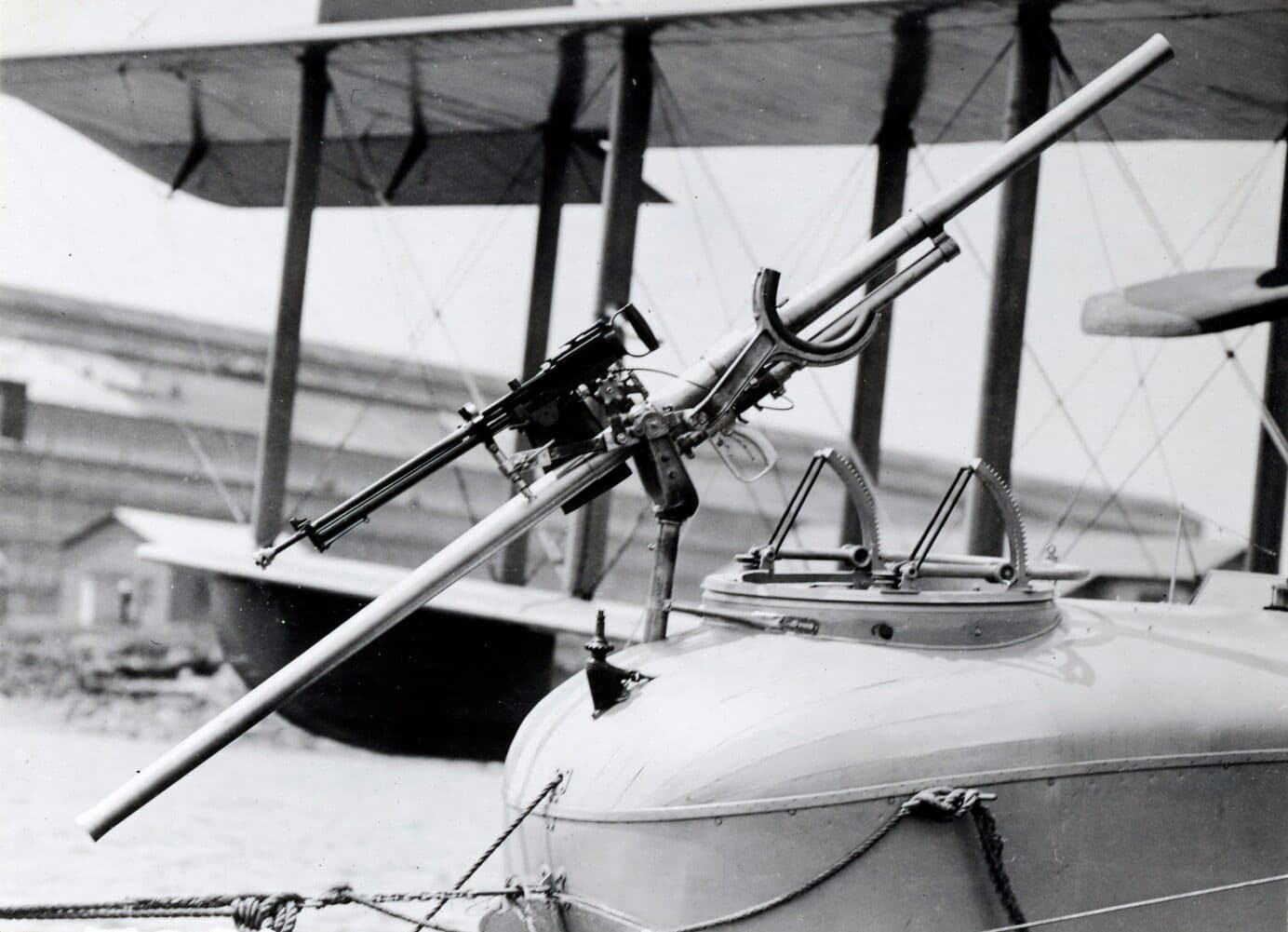
British experiments found the Davis Gun fired out to a maximum range of about 8,000 yards with a muzzle velocity of nearly 1,200 feet per second (fps). Accurate fire was achieved at up to 2,000 yards, and the explosive shells were reported to cause considerable damage.
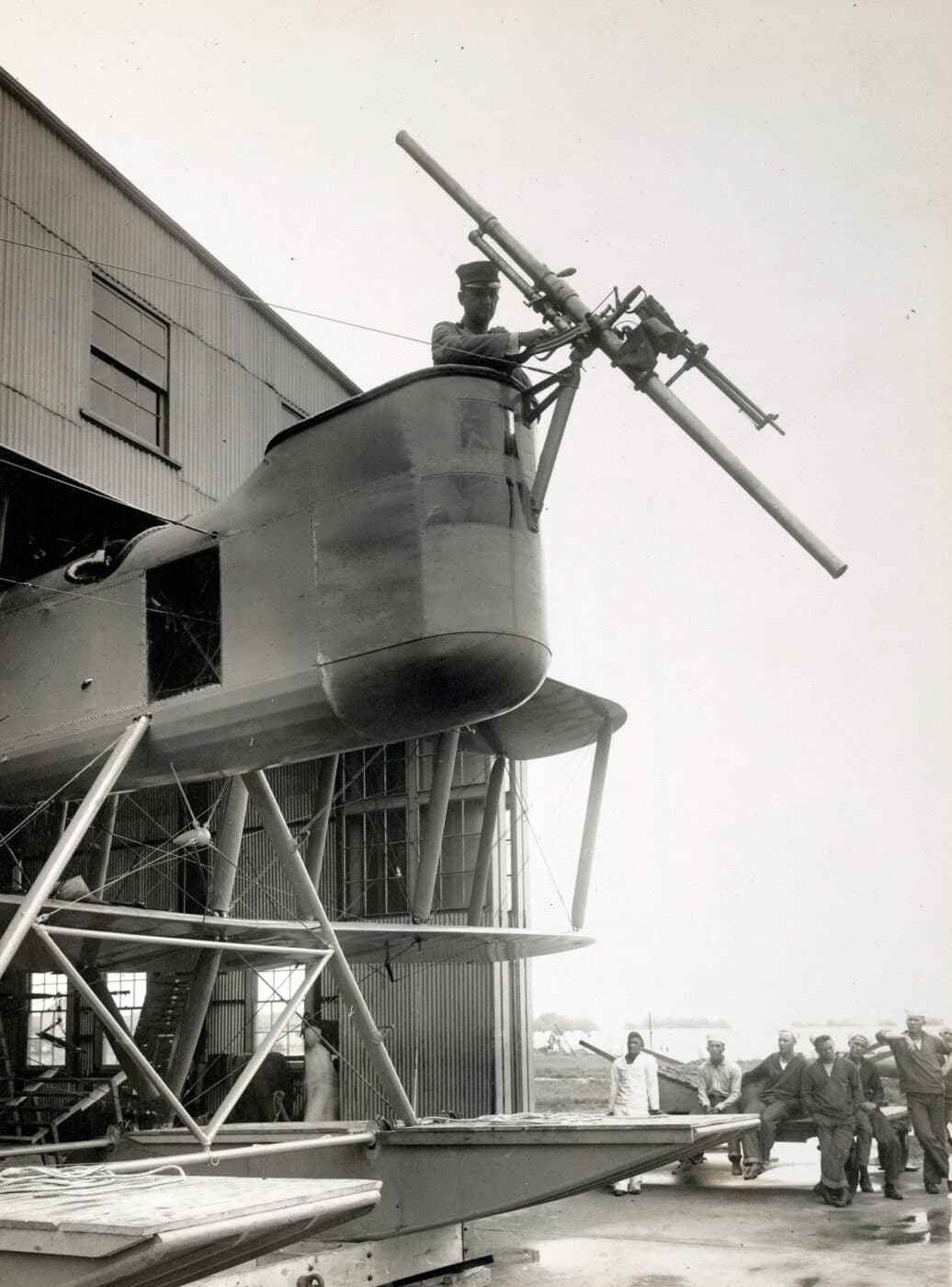
The British found that the aircraft of the time could easily be damaged by either the forward or rearward blast of the Davis gun. Various carrying aircraft were modified with light alloy plating to protect the airframe from the Davis Gun’s blast on either end.
Prime Targets
The British projected two prime targets for the Davis Gun — the Zeppelin bomber threat to Britain, and the U-boats lurking off the British Isles. In-flight reloading proved challenging, particularly based on the design of the carrying aircraft. The weight of the Davis Gun was also an issue: nearly 210 lbs. for a 6-pounder with the gun and mount, plus the weight of the ammunition.

In early 1917, the British outfitted several of their massive Handley Page 0/100 bombers with the 6-pounder Davis Gun, mounting them in the nose gunner’s position (a few carried a special quadruple Davis mount). These were tested by squadrons based in Dunkerque, France, and were used on ground attack missions.
There is little information on their effectiveness in this arrangement, but the guns were withdrawn from these squadrons in early 1918. One 2-pounder Davis Gun is reported to have been used aboard a Royal Aircraft Factory R.E.8 bomber with the gun firing forward and down at a 45-degree angle.
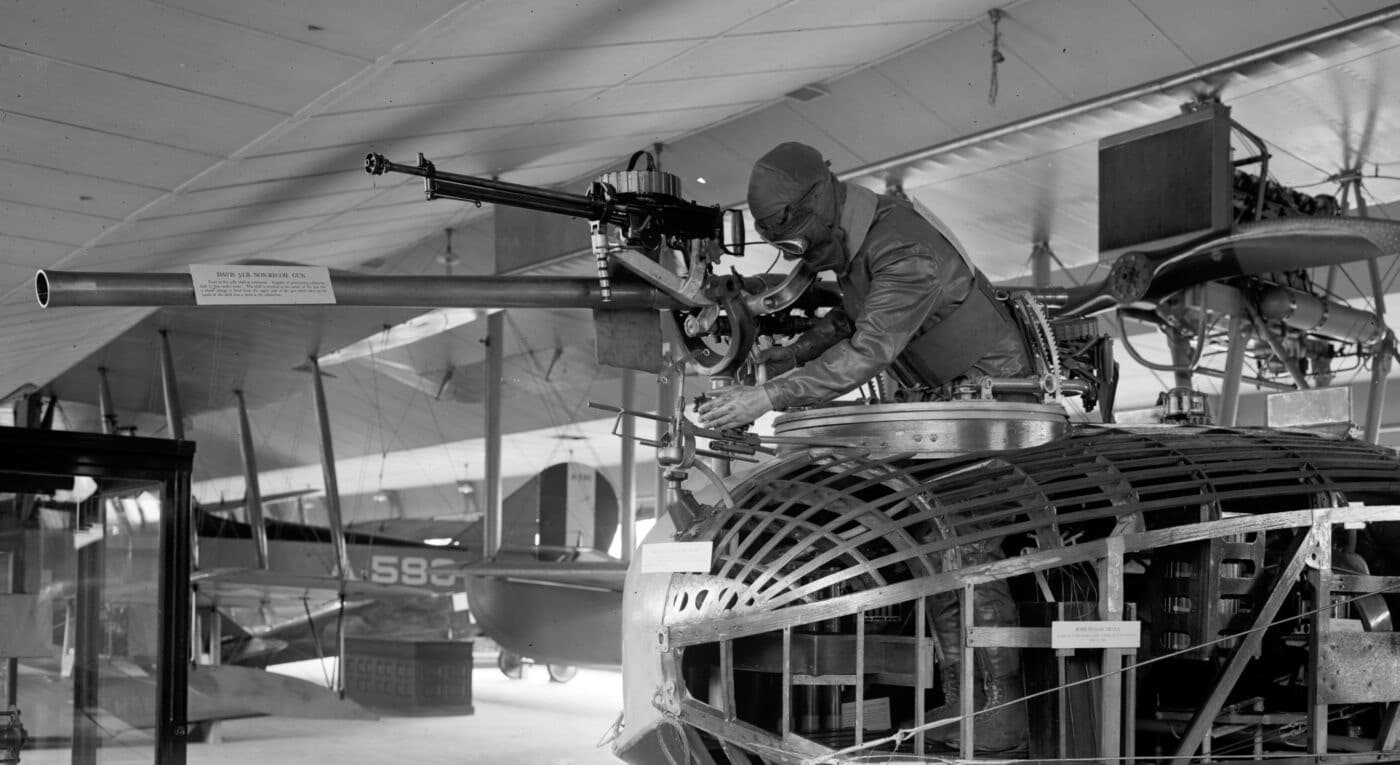
Late in the war, two Airco DH.4 light bombers were modified as bomber interceptors with a Davis 2-pounder mounted in the rear observer/gunner’s cockpit — the pilot aiming the weapon and signaling the gunner when to fire and reload. The war ended before they could be tested in combat.

The U.S. Navy mounted the Davis Gun in the bow gunner’s position on the massive, experimental Naval Aircraft Factory N-1 floatplane, and later aboard the big Curtiss F-5-L flying boat. Both aircraft were intended to fly anti-submarine patrol missions equipped with the 6-pounder Davis Gun.
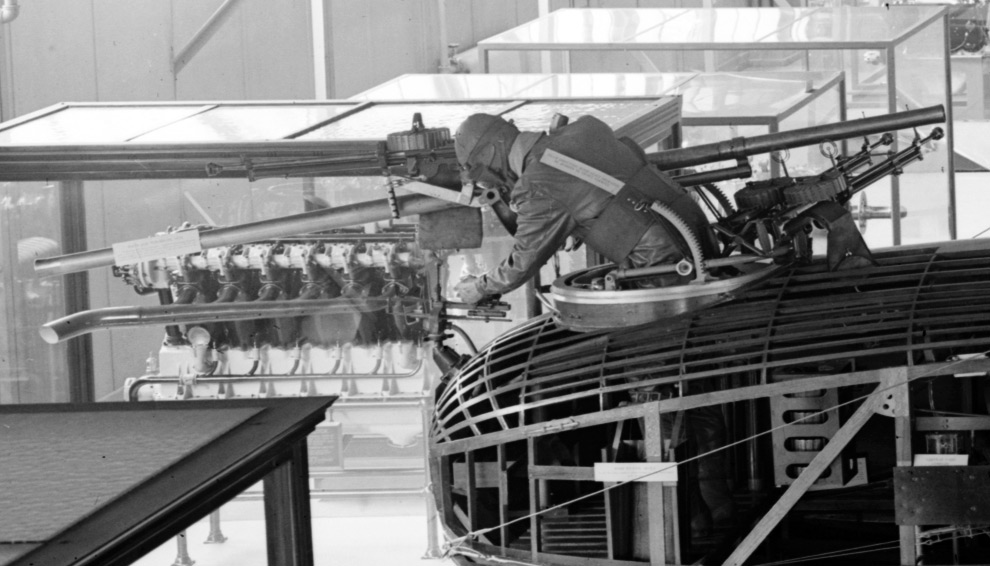
U.S. aircraft carrying the Davis Gun had a .30-caliber Lewis machine gun mounted atop the recoilless barrel firing spotting rounds for the gunner. The Navy also mounted the larger Davis Gun variants aboard small “sub chasers”. British experiments with the Davis Gun stopped with the end of World War I, while American tests continued until at least 1921.
Legacy
Little has been written about the Davis Gun, and the weapon was largely forgotten after World War I. Recoilless gun concepts languished until the late 1930s, with the prospect of a second world war looming.
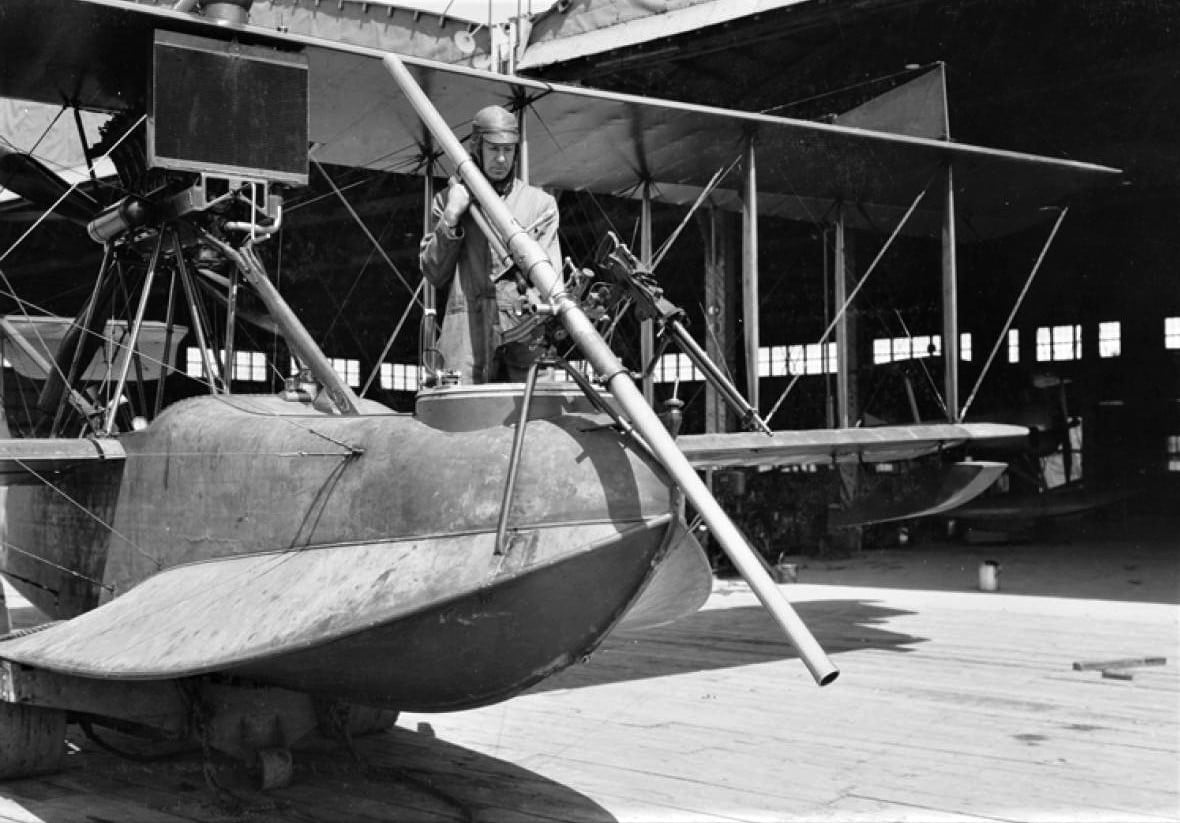
Even so, I was able to find a complimentary review of the Davis Gun in the U.S. Navy Department’s report to the Federal Government titled “Navy Ordnance Activities, World War 1917-1918”, delivered on May 1, 1920:
For anti-submarine warfare, the need for a large caliber gun with sufficient power to penetrate the hull plating of a submarine, either on, or slightly below the surface, was strongly felt and the Davis non recoil gun was produced and mounted for that purpose. This gun is a radical departure from previous types of guns, in that the barrel is open at both ends, and is loaded at the center by rotating half of the barrel around an off-set axis. The projectile leaves the front barrel in the usual way, while a rear charge of equal weight is projected from the rear barrel. The force of the explosion of the charge is taken up by the reaction between the projectile and the rear charge, and no recoil force is transmitted to the mount. In the early form of this gun, a rear charge of birdshot and Vaseline is used, while in the later model a steel cartridge case is itself projected to the rear, leaving the bore clear for the next load.
Suitable stops prevent the rear barrel being depressed sufficiently to endanger the upper wing of the airplane. In place of the usual form of sight, a Lewis gun is mounted above the Davis gun barrel, at such an angle that the Lewis gun bullets, and the Davis gun shell will strike the water at the same point from the usual height of patrol (about 1,000 feet). In aiming the gun, bursts from the Lewis gun are fired in approaching the target, and the Davis gun is fired when the Lewis gun splashes near the mark—a double trigger facilitates this action.
As an example of the possible value of such a weapon, an incident which occurred off Wexmouth, England, in the latter part of September 1918, may be cited. A patrolling seaplane sighted a submarine with its periscope exposed and failed to damage it with the two bombs carried by the plane. No reply was received to radio messages sent by the plane and the submarine finally escaped, after remaining near the surface for an hour and a half, probably because her diving rudders had gone out of commission. Had a seaplane armed with a Davis gun been present the destruction of the submarine would have been assured.
The types of large flying boat used for anti-submarine patrol in this country were fitted to carry this gun, but none had been sent abroad up to the time of the armistice.
Navy Ordnance Activities, World War 1917-1918, U.S. Navy Report – May 1920
Final Thoughts
By the time of the Armistice that concluded World War I, the United States had established itself as a world power. American ingenuity and American exceptionalism led the way to a new international dynamic.
While the Davis Recoilless Gun is virtually unknown today, and was little known even in 1918, the useful technology was there. By the time of the Second World War, combatants finally caught up to Commander Davis’ invention.
Editor’s Note: Please be sure to check out The Armory Life Forum, where you can comment about our daily articles, as well as just talk guns and gear. Click the “Go To Forum Thread” link below to jump in and discuss this article and much more!
Join the Discussion
Continue Reading
Did you enjoy this article?

 85
85






